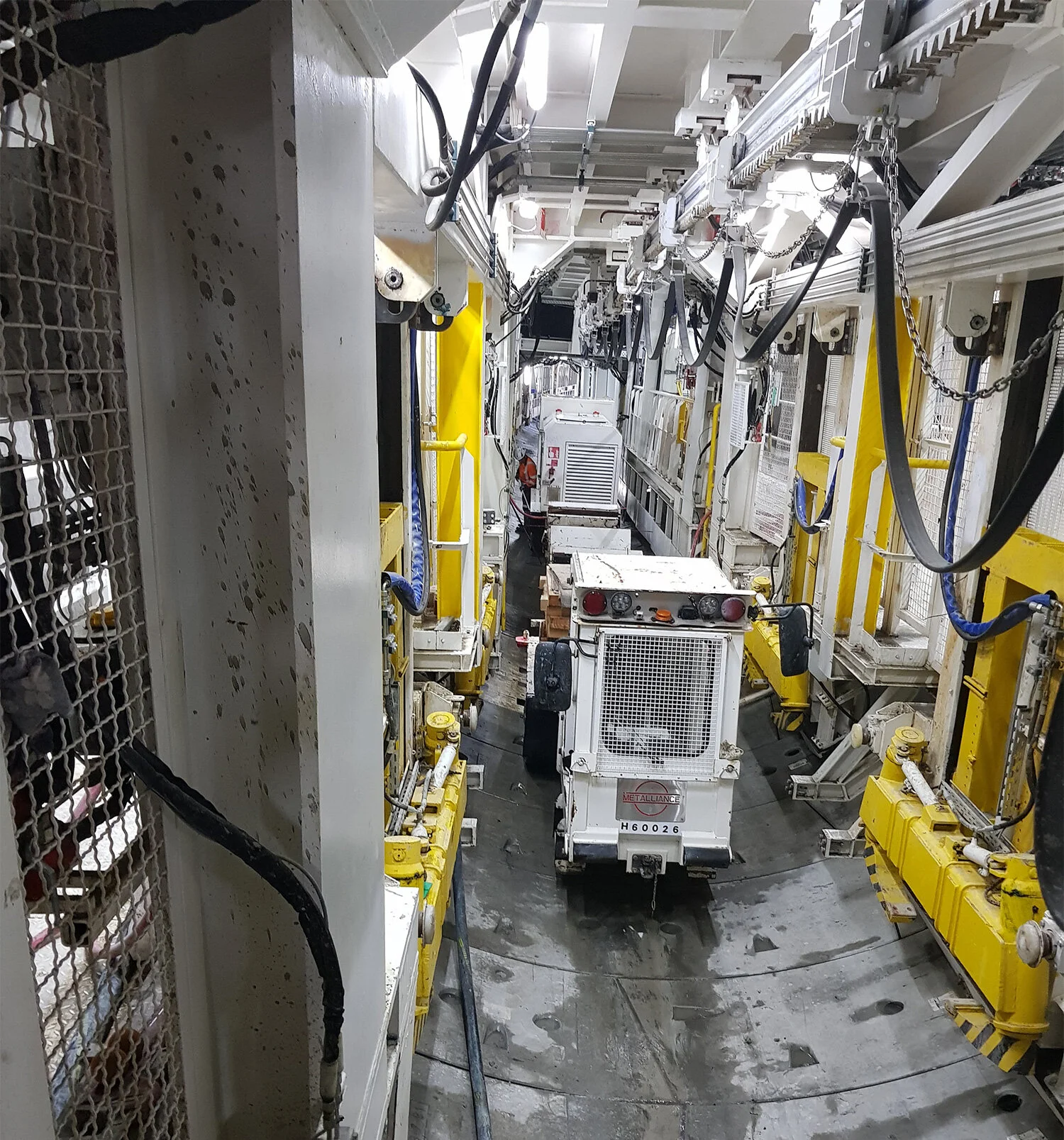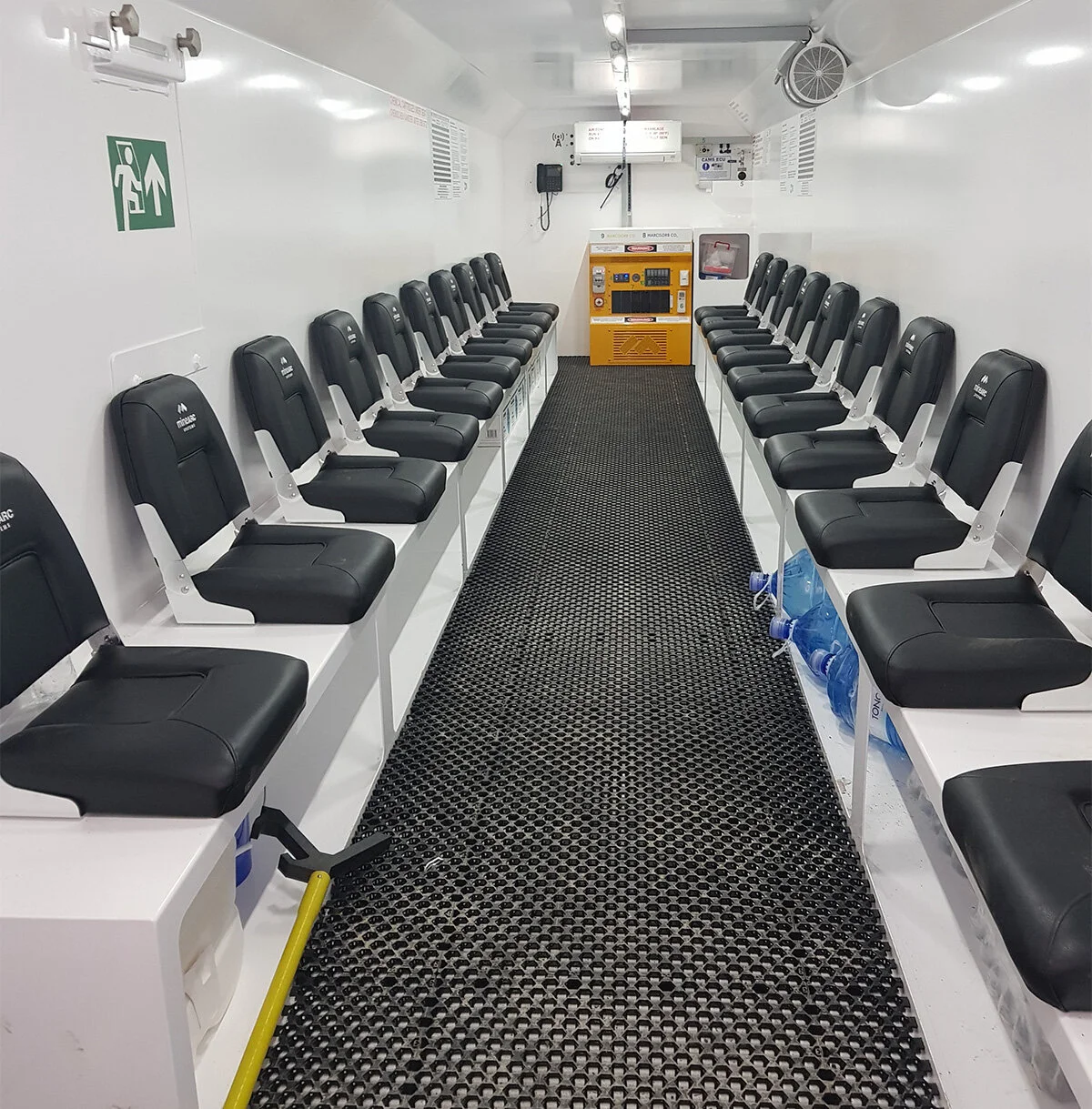Our TBM Explained
Life on board our Dame Whina Cooper tunnel boring machine (TBM) resembles something out of this world.
The massive machine began it’s 1.6 kilometre voyage from Mt Eden to Aotea at the end of May. As of late June, the TBM had bored 86 metres underground and has excavated approx over 7000 tonnes of earth in the process.
In addition to all the gear needed to build the tunnels, the TBM shares quite a few similarities with a spaceship - a compressed airlock and refuge chamber.
So now that it’s been launched – underground, not into deep space – we thought what better time to take a closer look at a few of the nuts and bolts of this “alien” environment.
Air lock
Our TBM is an EBP (Earth Pressure Balance) machine, which basically means that pressure at the tunnel face is higher than atmospheric pressure. The higher pressure stabilises the ground being excavated and keeps water away from the tunnel. This method improves safety and reduces any ground settlement. If there is a mechanical issue that has to be repaired, we need a way to access the pressurised area. The air lock provides this. A minimum of two people would climb into the air lock along with their tools, close the door, and air pressure is increased until it equals that in the front of the TBM. Then, and only then, can the internal door be opened. Gerry Goodwin, CRL Assurance Manager for Stations and Tunnels, said it feels a bit like it does when an aircraft starts to climb and your ears become blocked, which you need to clear. The reverse applies when the workers return to the TBM.
ABOVE: Compressed air lock, similar to that of a deep sea diving rig
Movement
When the TBM is first launched, it needs something stable to push against. To enable this, large "shoes" are bolted to the launch cavern lining of the tunnel portal at Mt Eden and then attached to long reaction arms.
This is a stable structure for the TBM to push against forward.
As excavation progresses, concrete segments are brought into the tunnel and put together to form a concrete ring. When enough rings are in place, the “shoes” will no longer be required. The TBM will use its hydraulic thrust jacks to push against the rings to move forward and excavate the next section of spoil.
When the TBM is first launched, it needs something stable to push against. To enable this, large "shoes" are bolted to the launch cavern lining of the tunnel portal at Mt Eden and then attached to long reaction arms.
This is a stable structure for the TBM to push against forward.
As excavation progresses, concrete segments are brought into the tunnel and put together to form a concrete ring. When enough rings are in place, the “shoes” will no longer be required. The TBM will use its hydraulic thrust jacks to push against the rings to move forward and excavate the next section of spoil.
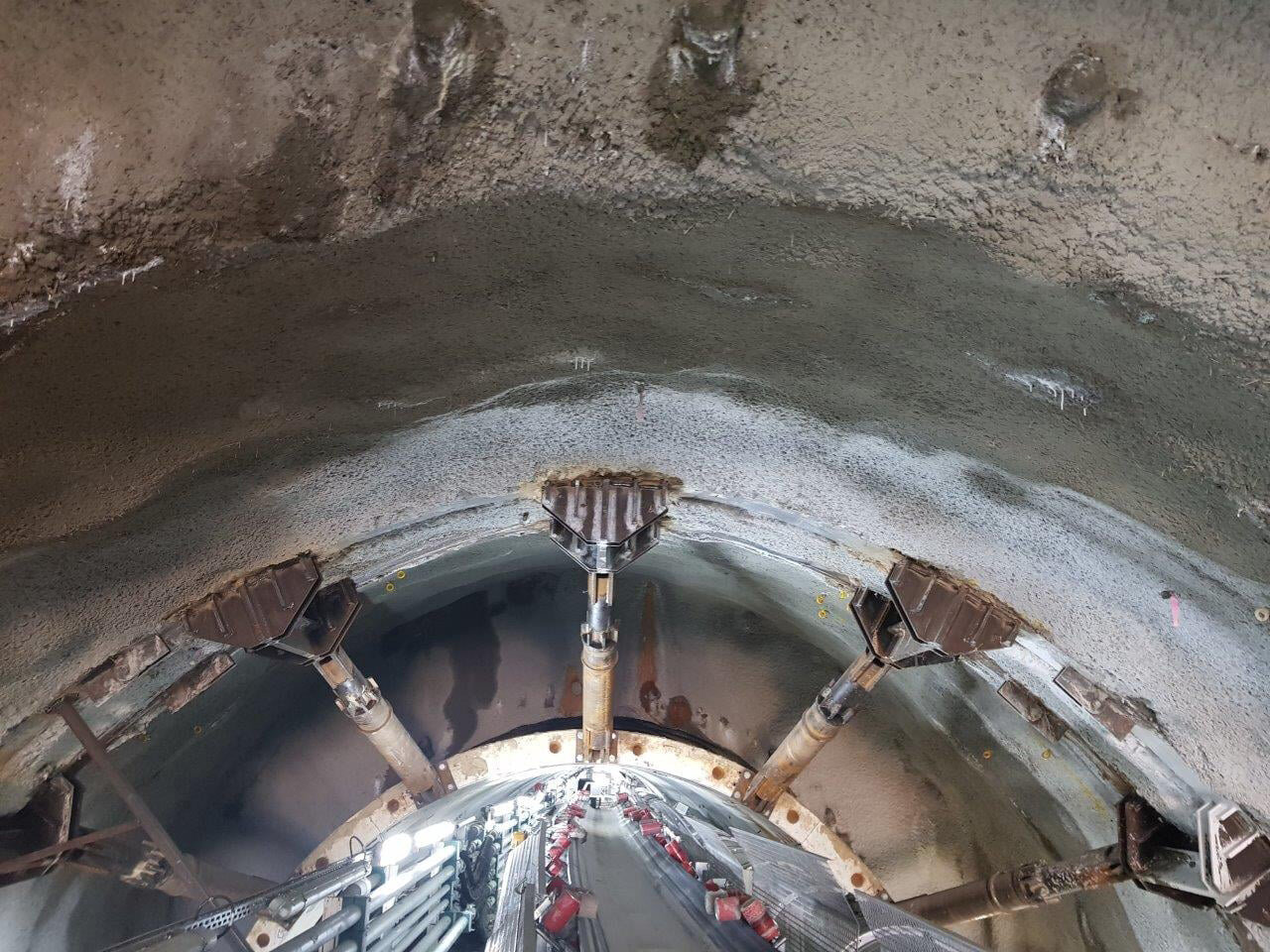
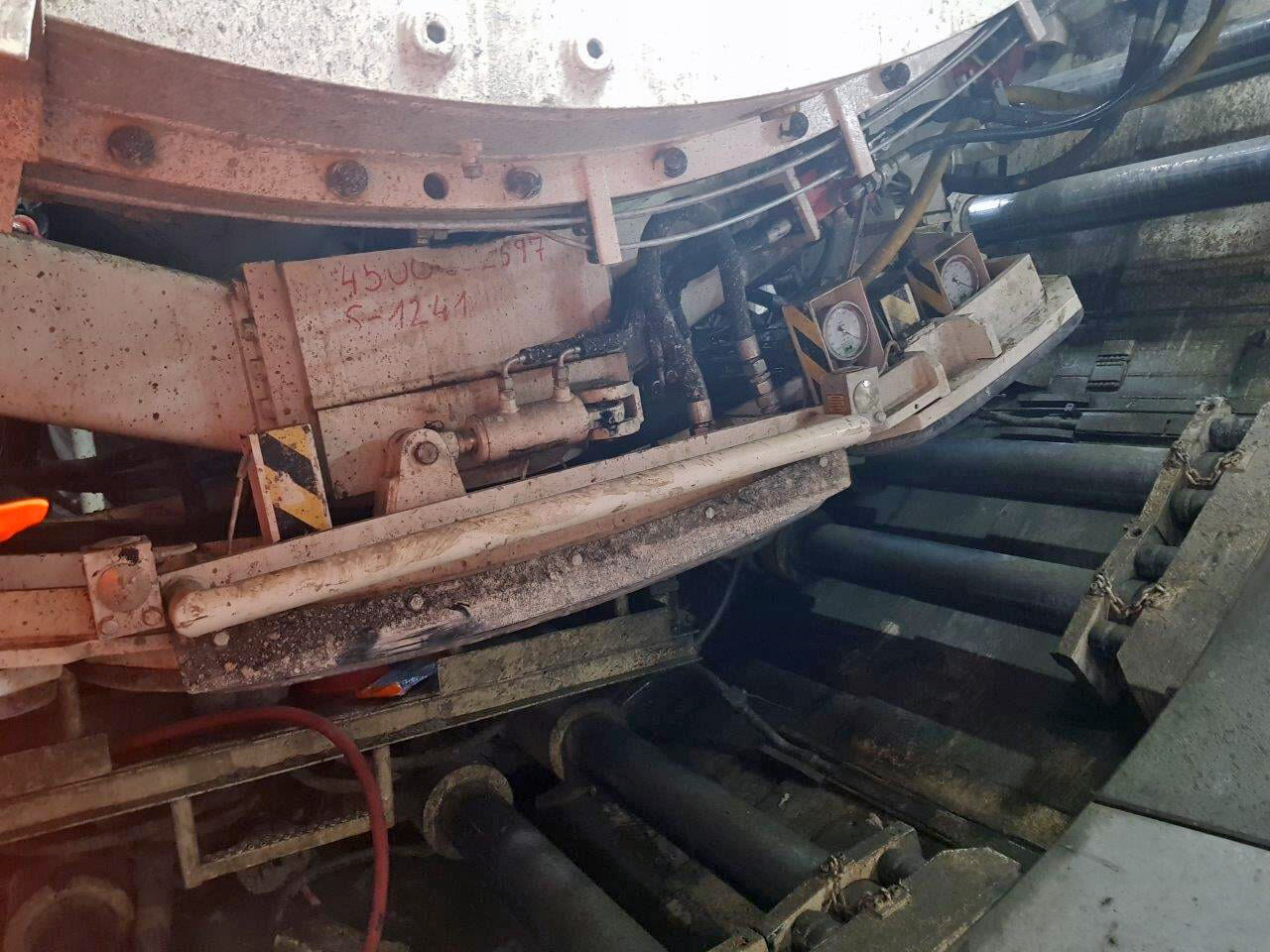
Lining
Each concrete segment is t 300mm thick and 1.1 – 1.6 metres wide - depending on the tunnel’s curve. A ring is made up of six regular segments and one smaller “key” segment which locks them all together in a cylindrical tube shape. As of the end of June, 52 rings - or 364 concrete segments - had been installed. The first TBM drive from Mt Eden to Aotea will includes about 1090 rings or 7630 segments.
The rings are numbered after they are built by either the ring builder or the TBM engineer. It is traditional to number the last ring built on your shift. This was done in the 19th and 20th centuries as a lot of the crews wages depended on how many rings they had built. Now, it’s more about keeping track and knowing where they are.
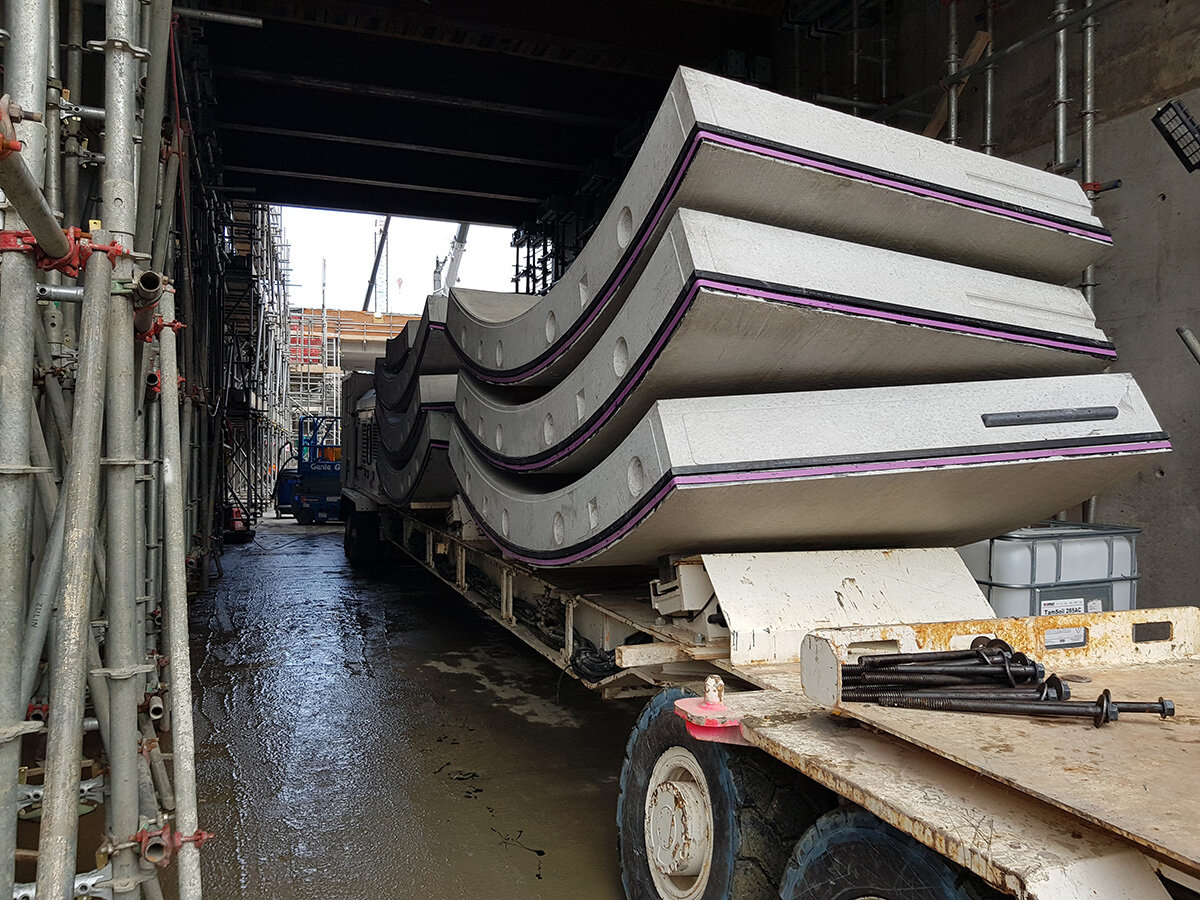
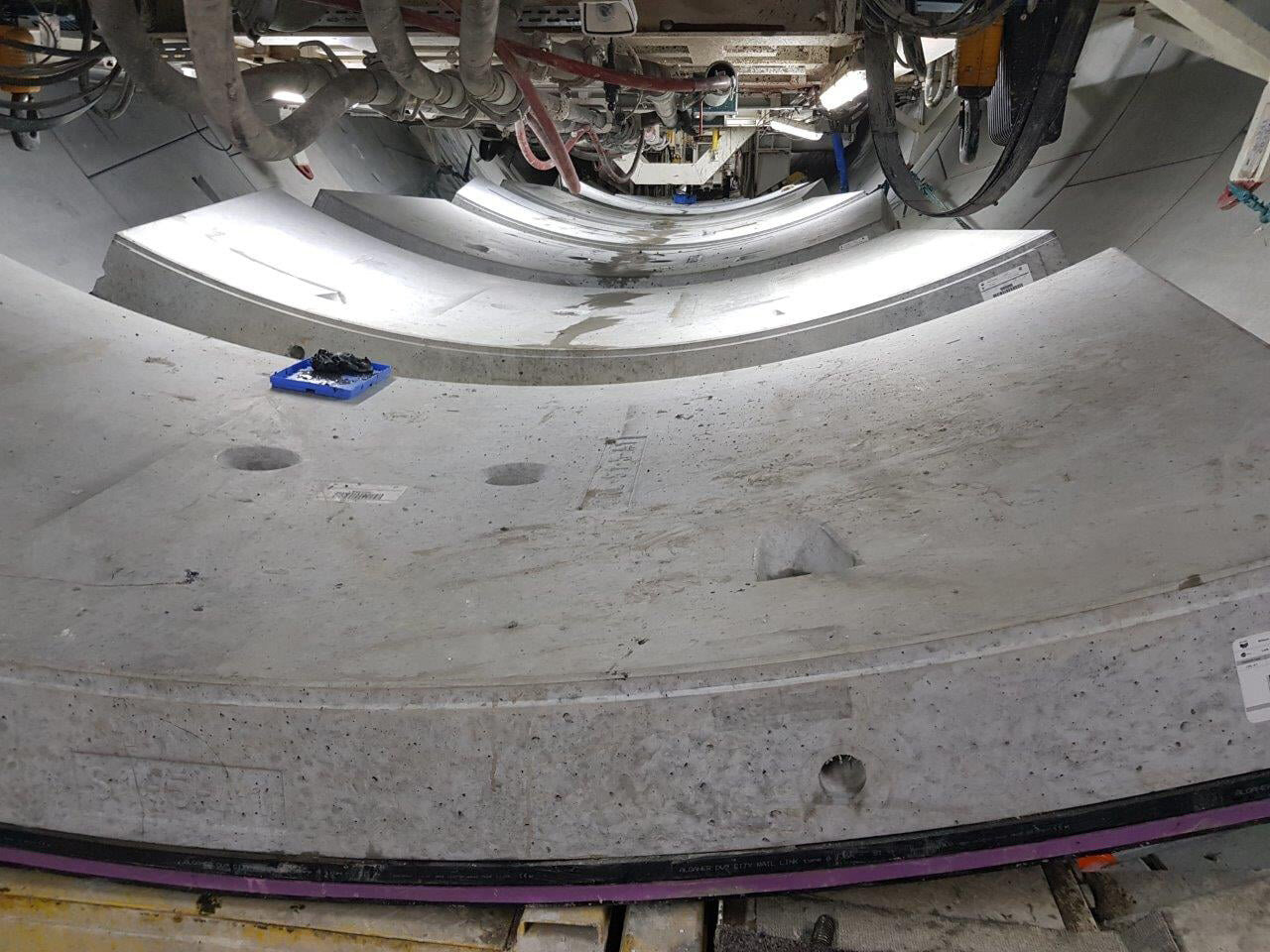
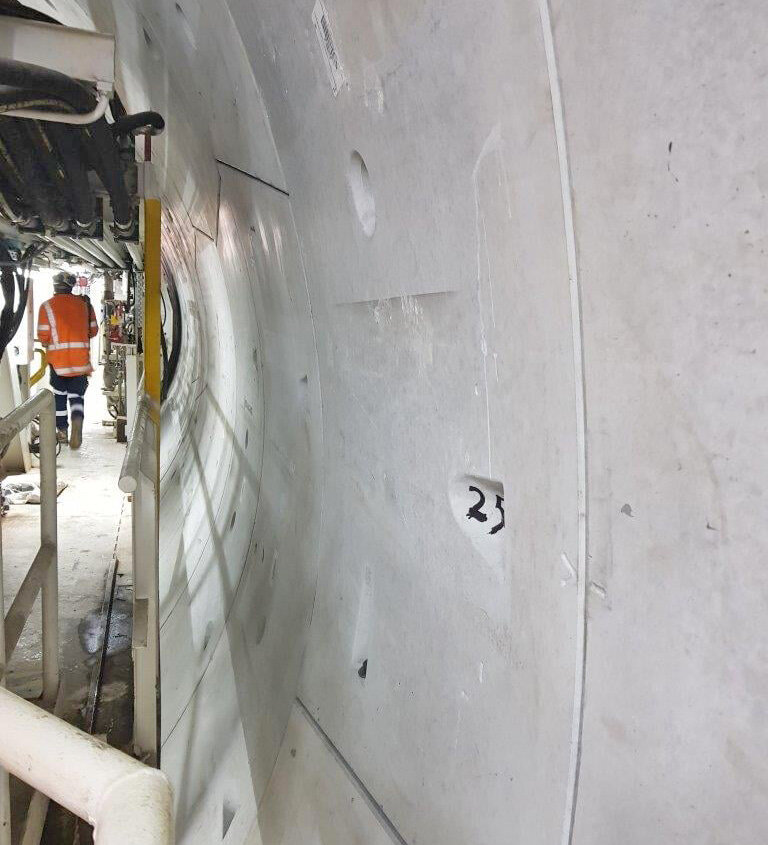
The MSV
The multi-service vehicle (MSV) is used to transport tunnel segments from the surface, to the TBM for installation. The segments are lifted off the MPV using an internal crane which rotates them and carries them to the segment feeder on the TBM. The segment erector works like a big robotic arm. It picks up the segment from the segment feeder using a vacuum foot, rotates it, and then places it into the correct position to form a ring. The MSV is also used to transport TBM crew into the tunnel.
ABOVE: The MSV drives into the back of the TBM carrying segments
Refuge Container
The refuge chamber is used as a safe space for underground personnel to use in the event of emergency. Fully customised for our TBM, the chamber has space for to up to 20 people and is equipped with a first aid kit, fire extinguisher, food, water and air conditioning among other things.
You can follow along with our TBM’s progress here: https://www.digcrl.co.nz/progress



